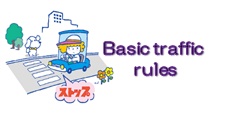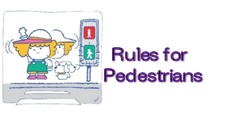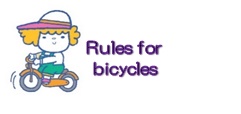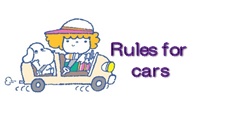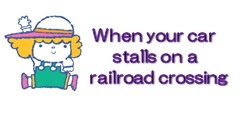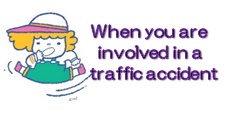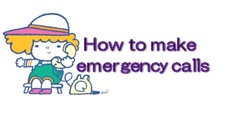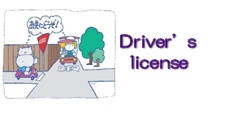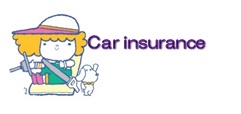本文
Japanese traffic rules〔EngIish〕
Do you know Japanese traffic rules?
■Basic traffic rules
A number of traffic accidents occur every year in Aichi Prefecture. Foreign residents are involved in traffic accidents as victims or assailants in an increasing number of cases. To protect yourself from traffic accidents, please abide by the basic rules below.
- Pedestrians keep to the right, while cars and bicycles keep to the left.
- Pedestrians have the right-of-way over cars.
- Observe traffic signals and road signs.
- Follow the instructions of police officers.
■Basic rules for pedestrians
- Use a sidewalk whenever one is available.
- Keep to the right on roads without sidewalks.
- When crossing a road at an intersection, observe traffic signals for pedestrians. Where there is no traffic light, use a zebra crossing.
- Before crossing a road, first look right and left carefully to make sure that no cars are approaching. When there are cars approaching, see to it that they have stopped before you start to cross the road.
- At night, wear a reflector or bright-colored clothes whenever possible.
■Basic rules for bicycles
- Keep to the left margin of the road. Get into line with other bicycles.
- You may ride a bicycle on a sidewalk where so indicated.
- It is not allowed for two persons to ride on one bicycle. Always grip the handle bars firmly with both hands. It is dangerous to hold an umbrella or other things while riding a bicycle.
- At railway crossings or STOP signs, stop and look both ways before crossing.
- Observe traffic signals at intersections.
- In Aichi Prefecture, many foreign residents are involved in traffic accidents while riding bicycles. Please use caution when you ride a bicycle.
■Basic rules for cars
- Never drive a car if you do not possess a valid driver’s license or if you are under the influence of alcohol.
- Observe traffic regulations, signals, signs and road markings.
- When driving a car, the driver and passengers are required to fasten their seatbelts. When riding a motorcycle, make sure to wear a helmet.
- Make sure to use a child-car seat for a child under six years old.
- Do not exceed the speed limits indicated by signs or markings.
- Turn on the lights at dusk as early as possible.
- Do not use a cell phone while driving a car.
- Senior citizens are involved in a number of traffic accidents. When you see elderly people, please give extra consideration to them while driving your car.
What to do in these situations:
■When your car stalls on a railroad crossing
If your car stalls on a railroad crossing, take the steps below to let the train operator know about the trouble immediately. Also, move your car outside the railroad crossing.
- Press the button of the emergency warning unit (mounted on the column of the railroad crossing alarm, etc.).
- Use an emergency flare in your car or other means to let the train operator know that trouble lies ahead.
- When an emergency flare or other means are not available, burn flammables that easily produce smoke near the railroad crossing.
■When you are involved in a traffic accident
In case you are involved in a traffic accident, keep calm and follow the measures listed below.
- Move your car to a safe place out of the way of traffic and turn off the engine.
- If there are any injuries, call the fire department (119). Until rescuers (including physicians and ambulances) arrive, give first aid (such as stopping bleeding with gauze or a handkerchief) to the best of your ability.
- Immediately call the police (110) and inform them of the location of the accident, the number of injured persons and the extent of their injuries. The police will then give you instructions.
- If you are not injured, do not leave the scene of the accident until police officers arrive.
- When you cause a traffic accident, you are required to assume civil liabilities (compensation for damages) as well as gross administrative sanctions (suspension/revocation of driver’s license) and penalties (including a fine). A traffic accident brings misery to you, your family and friends. For this reason, ensure safe driving to prevent traffic accidents.
■How to make emergency calls
(1)Injuries (119)
Dial 119 in the event of an injury. 119 is in service 24 hours a day everywhere in Japan at no cost to the user.
How to call…
- Simply dial 1-1-9. If you are using a public telephone, press the red emergency button firmly.
- Explain to the operator clearly that the emergency is an injury, and give your name and location.
Kega o shimashita. (“I/Someone am/is injured.”)
Basho wa (place) desu. (I am at/in _____.)
Watashi wa (name) desu. (My name is _____.)
(2) Traffic accidents (110)
Dial 110 if a traffic accident occurs. 110 is in service 24 hours a day everywhere in Japan at no cost to the user.
How to call…
- Simply dial 1-1-0
- Explain the incident in detail, including the time and place it occurred. Give your name.
(time), (place) de kotsu jiko ga arimashita.
(There was a traffic accident at [time] in/at [place].)
Watashi wa (name) desu. (My name is _____.)
Renraku saki wa (phone number or mobile phone number) desu.
(My contact phone number is _____.)
About international driver’s license
■Driver’s license
When you drive in Japan, you need an international license that was issued by a signee to the Geneva Convention or a driver’s licence that you got in Japan.
For details, please ask someone at the Aichi Prefecture Driver’s License Bureau or the Higashi Mikawa Driver’s License Center.
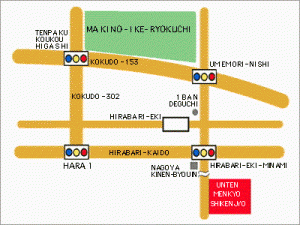
Aichi Prefecture Driver’s License Bureau
Tel: 052-801-3211
2845-409 Kuroishi, Hirabari, Tenpaku-cho, Tenpaku-ku, Nagoya
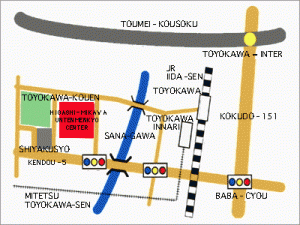
Higashi Mikawa Driver’s License Center
Tel: 0533-85-7181
2-7 Kanayanishi-machi, Toyokawa
■Car insurance
It is recommended that you subscribe to the voluntary insurance (nin-i hoken) in addition to the compulsory insurance (kyosei-hoken), so that you can prepare yourself for a possible car accident and cope with potential compensation for damages.
Compulsory insurance (Automobile collision liability insurance)
An owner of a car or a motorcycle is required to subscribe to this insurance under the Automobile Liability Security Law. You have to buy the insurance when purchasing an automobile or having a periodical, legally-mandated inspection (shaken) of your car. An insurance agency (including car dealers and car inspection shops) handles the application process.
Voluntary insurance
This voluntary subscription insurance covers compensation for damages inflicted on the vehicles and passengers involved (because such compensation is not covered by the compulsory insurance), and indemnifies you for damages beyond the limit of compulsory insurance.

